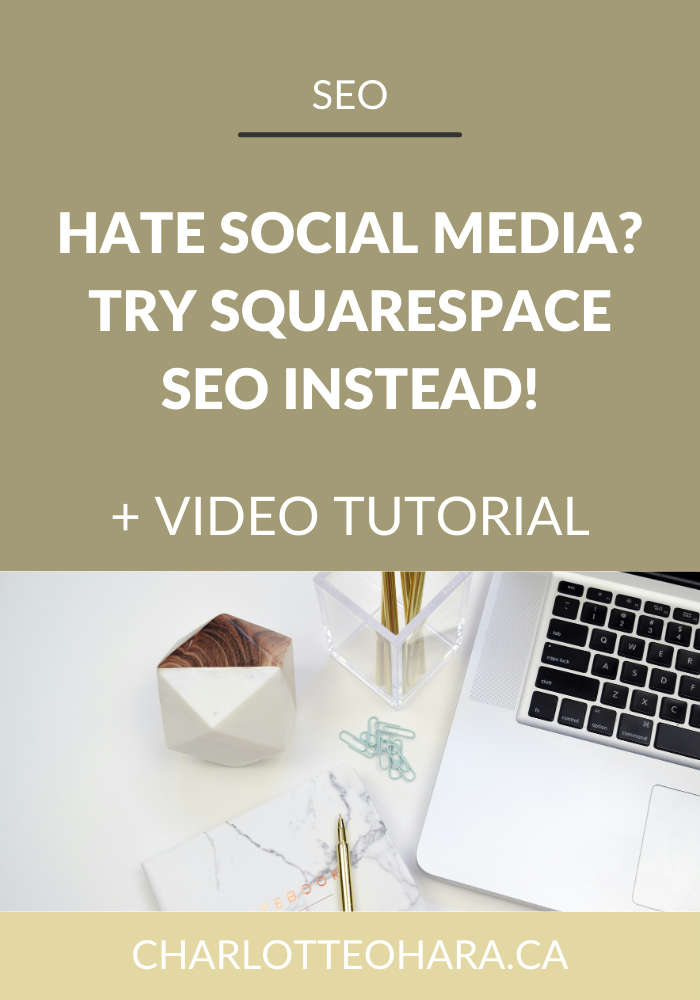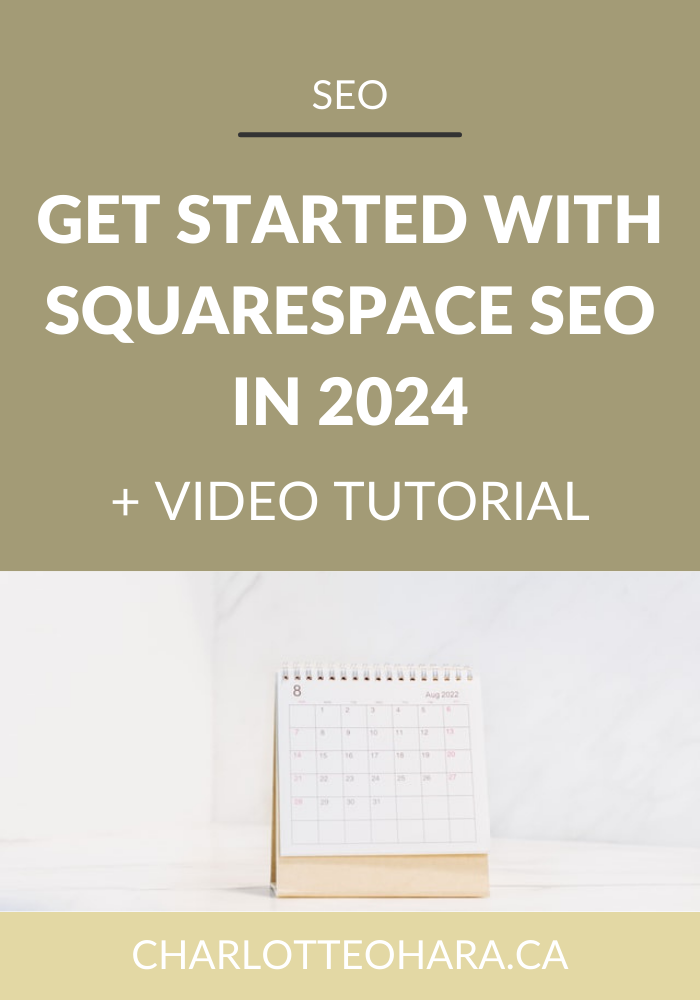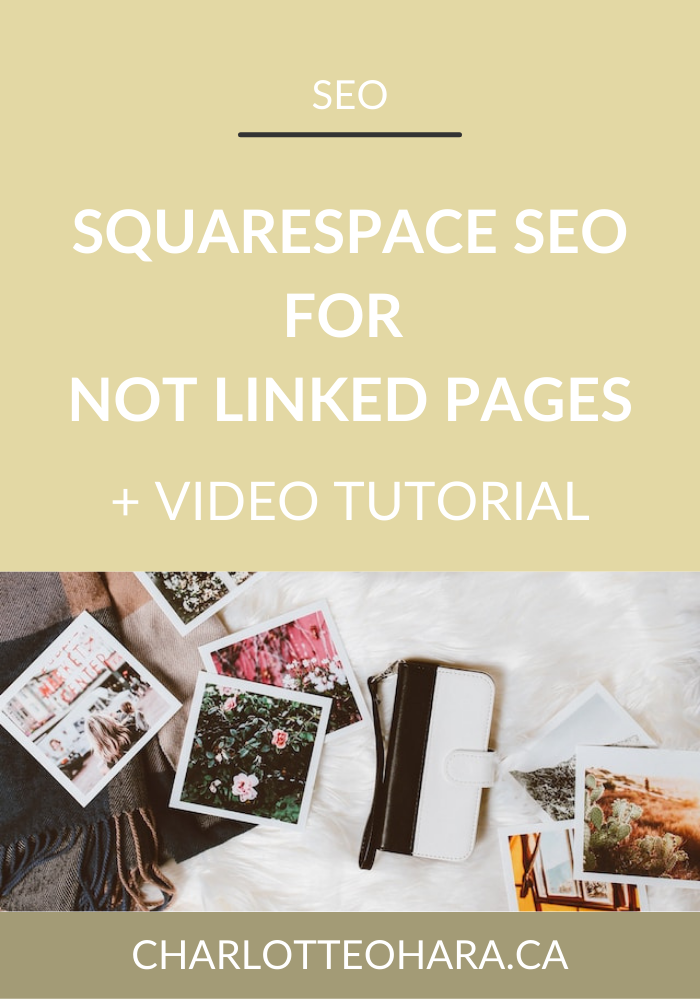How to write blog posts that are both SEO-friendly and on-brand
Hello hello! I’m super excited to share today’s blog post because the topic is inspired by a question that was asked during one of my recent daily Instagram Live Q&A videos.
The question asked was “How can I write blog posts that are good for SEO but are also on-brand?”
I LOVE this question and decided it deserved it’s very own blog post where I share my best tips, things to consider and recommendations for writing blog posts that give you major SEO points but also remain on-brand and speak to your ideal audience.
Blogging isn’t rocket science, but it does require a little thought, planning and effort if you want to do it right. Good writing is a skill, but it’s something that can be improved over time with a little practice and guidance. At the same time, creating blog content that is SEO-friendly is a whole other ballgame than writing a random ol’ blog post just for the heck of it.
Listen, no one wants to write a blog post that has lots of strong SEO elements but comes across as robotic, impersonal or cold. Even if super corporate is your vibe, I know we can do better than that!
Instead, the goal is to write blog posts that tick all the SEO boxes but are still easy to read and undeniably YOU & YOUR BRAND.
In today’s post, I’m going to help you find the balance by giving you real, actionable points and recommendations for you to follow and implement on your own blog!
Whether you’re a blogger, solopreneur, small brand or business or all the way up to a large company, this post is for you!
So sit back, grab a fresh beverage and let’s talk about on-brand and SEO-friendly blogging!
What makes a good blog post?
Let’s begin by asking some super basic but important questions:
What makes a good blog post?
Why would someone keep reading past the first few lines?
What elements does this post have? Does it follow a tried and true format? Is it a mix of text & visuals?
What makes your post content compelling enough to finish and click through to read more?
Before you sit down to write your next blog post, I recommend coming back to basics. There are so many factors to consider here, and we are going to go through a whole list, but take a hot second to consider the questions above.
Personally, I always do my best to write blog posts that both provide value and entertain my readers.
Think about the kind of blog posts YOU like to read and use that as your guide! Obviously the blog post must contain the relevant information on whatever topic you’ve chose, but the most successful blog posts are also structured/formatted in a way that makes it easy to read and has a tone that isn’t a turn off.
If you keep this in mind, you are already laying a solid foundation for both SEO and staying on-brand. Let’s move on.
What goals do you have for your blog post?
Next up, let’s take a look at the goals you might have for your blog post. I like looking at blog posts this way because there are often measurable elements - you can look at metrics, data and numbers to see how each blog post performs and that gives you insight into what works & drives the needle forward…and what doesn’t.
As you go through this list of examples, make note of what blog post goals align with SEO or branding, as well as where there’s overlap:
Increase traffic to your website via organic search
Fresh content for your website (since this is something search engines consider, they’re always crawling and indexing!)
Attract and connect with your ideal audience and dream clients/customers
Promotes your products/services or leads into an offering of some sort
Call-to-action (CTA) to join your email list
Offer straight up information vs entertainment value (or both?)
Give people something to binge online
Develop your “voice” online
Showcase parts of your portfolio
A way to show up in search results for your target keywords
Etc.
WOW, that’s a lot of goals you might have for your blog posts and luckily it’s totally possible to hit more than one goal with a single blog post, especially when you do it right!
Human elements of a good blog post
It’s all well and good to have a “goal” for your blog post, but at the same time we also want to put ourselves in the reader’s shoes and consider various factors that will make sure that they actually ENJOY reading your blog post! Believe it or not, the human element of the blog post really matters especially if you’re trying to create content that ties together SEO and remaining on-brand.
Remember, we’re writing for humans and real people first - not just creating content for Google’s bots to “read”!
Consider these human elements of a good blog:
Readability
Post is fast to load
Natural language (i.e., avoid keyword stuffing)
Proper formatting
Links to other content within the blog post itself
Variety of content: text, images, video, graphics, etc.
Shows up and displays content properly on a smaller device (tablet, smartphone, etc.)
Etc.
You might not know it, but many of the points above touch on an important thing called User Experience (UX)! User Experience is also a significant factor for SEO, which is pretty cool too.
What is your brand?
If you’re reading this blog post, it’s safe to assume you already have some sort of website and that it probably relates to a brand (big or small, personal or professional, whatever).
What is YOUR brand?
What is your personality? Are you corporate or personal? Casual or fancy? Minimalist and understated? Cool and hip? Elite and luxury market? Flowery and personable? Reserved and all business?
Do you deal with people one-on-one? Are you here to sell your services? Sell quirky goods to a niche market?
Are you a go-to destination for information online? Do you specialize in something? Are you a lifestyle blogger who creates content from the heart?
You must have a strong and clear understanding of YOUR BRAND so that you can create website content and blog posts that really resonates and connects with your ideal audience.
Understanding your ideal audience
Now let’s consider the other half of the equation.
If you really want to write blog post that are SEO-friendly AND on-brand, it helps to zoom out and understand what kind of content your ideal audience is looking for.
It’s super important to understand your audience: who are you trying to reach? what are they interested in and what do they want to read? why are they coming to YOU? what can you offer them?
You can get fancy and create a persona for your ideal audience, the people who will resonate best with your brand, but even just a rough idea is better than nothing.
But remember, it goes both ways: you must know who YOU are and from there understand the people you are trying to attract through your website & blog content.
Once you have a handle on your own brand as well as a good idea of what your ideal audience is looking for on your website, that will guide you content plan and strategy.
Coming up with a blog content plan, strategy and calendar
Good blog post don’t just happen by accident - if you want your blog posts to perform well and start bringing in the traffic, you need to plan for it!
This is where a blog plan and strategy comes in. It sounds fancy but it’s pretty simple.
Start by asking yourself these two questions:
What are 10 things I wish my ideal audience knew?
What are 10 questions that people are always asking me?
This can be a great starting point for coming up with blog post ideas, because you know it will serve your ideal audience - either by answering their questions (which is basically what they are searching for in Google) or giving the information they need on a particular topic/niche.
If you do this exercise, you will have 20 blog post ideas that you KNOW will help you reach your ideal audience - wow!
This also ensures that your blog posts stay on- topic and that you’re keeping your content to a certain niche/industry. Remember search engines consider this as they crawl & index your content so sticking to certain topics can be a big SEO factor.
That’s all well and good but the next step is to actually WRITE those blog posts!
Having a blog calendar is a total game changer and it’s the best way to ensure that these blog posts actually get written. You can keep things super simple and say that you’re going to start off by writing and publishing one blog post per week, let’s say every Tuesday morning.
Schedule that into your calendar, set a recurring reminder for yourself, plan it out in Asana, whatever. Next, assign one of the blog post topics that you brainstormed above to each week’s blog post. This way, you’ll never find yourself without an ideal of what to write and you know you’ll be creating blog post content that people actually want to read and are searching for.
SEO elements to include in your blog post
Alright, let’s move on to the meat and potatoes that I know you’re super interested in: SEO elements to incorporate in your blog posts.
SEO is what bridges the content on your website to people who are searching for a topic online. SEO is hugely valuable because it’s basically free marketing, but that doesn’t mean that it’s easy to master!
Here are some SEO elements to consider when writing these blog posts:
Blog post title
Headers and hierarchy (H1, H2, H3, etc.)
Body text and paragraphs
Bullet points
Numbered Lists
Strategic keywords
Filled out blog post’s SEO title & description fields (optional)
Etc.
Remember that SEO is an art, not a science. There’s so much to learn about Squarespace SEO which is why I have written about it a lot - it’s the most popular topic on my blog by far. Check out my Squarespace SEO page for more resources, blog posts & video tutorials and get your copy of my Squarespace SEO Checklist below for free!
SQUARESPACE SEO SERIES
This article is part of my series on Squarespace SEO. I have so many tips to share on the subject that it would have been crazy to put it all in one article! There are many misconceptions about Squarespace SEO which is why I've dedicate so many posts to this topic. Enjoy!
Click to view all posts in the Squarespace SEO Series
Visit my Squarespace SEO page for lots more resources.
Come up with a solid blog post title
When you sit down to actually write the blog posts that you’ve planned out, one of the first things to figure out is the blog post title.
From an SEO point of view, the blog post title should align with what people are searching for online. Include keywords and use natural language - keep it simple, don’t overthink the title or try to be witty, especially if you’re looking to rank for certain keywords.
In many cases, the blog post title is automatically set up as the H1.
Write a captivating introduction to each blog post
The introduction is your chance to grab the reader’s attention, explain the purpose of the blog post, what they can expect, and how you’ll address their problem or whatever they’re interested in.
You can keep the introduction fairly short & sweet with just a few sentences, or build it up a little more - up to you and it will depend on the type of blog post you’re writing.
This is done in the body content of the blog post.
Stick to your brand tone
As you write the blog post, keep your brand’s personality in mind. This will help you set the “tone” of the blog post and ensures that you remain distinctive and that it fits your vibe.
A big corporate business will obviously use a very different tone than a local small business/brand. Keep the tone of your blog posts on-brand while still including all the SEO elements we talked about above.
Style headers for brand colours
One way you can include visual branding elements within your blog posts is by setting up different headers to include brand colors. This is most commonly done with H2 and H3, or even custom H4 headers. In Squarespace, set this up in the Design panel - more info HERE.
Incorporate media elements
As mentioned above, a good blog post contains a combination of text and media such as images, graphics, videos, infographics, etc.
There are a few ways to do this and obviously it will depend on the type of blog post you’re writing. However, at the very least, I recommend including some sort of image to go along with the post! A gallery or slideshow might also make sense if you have several images.
You can beef it up by adding in/embedding a video (either your own video or someone else’s so long as it is relevant).
Graphics and infographics are really fun and can be super helpful too. Canva is a great place to create this custom graphics.
Related: How to get images on your Squarespace website to show up in Google image search results
Final Thoughts
I am a firm believer that writing blog posts doesn’t have to be a horrible task - in fact, it can be FUN marketing project that you take on!
The best blog posts not only serve your existing audience, but they also add new content to your website that can then connect with even more of your dream audience online. Think of all the millions of people who turn to Google every day and do an online search looking for specific content. The more content quality and targeted content you have on your website, the better chance you have of showing up in search results and connecting with these people - and blog posts are one of the best ways to do this.
If you’re going to blog, do it right! Create and write posts that are on-brand AND are SEO-friendly. Double whammy, my friend.
Recommended posts about blogging with Squarespace:
Recommended posts about Squarespace SEO:
Can SEO really drive more leads for your services-based business?
Here’s why every services based business needs an SEO strategy
Setting up a Google My Business profile to go with your Squarespace website
What are keywords and how do they relate to Squarespace SEO?
Now it’s your turn to tell me, do you think your blog posts are both on-brand and SEO-friendly? Do you focus on one aspect more than the other? Have you learned something new here? I’d love to know so leave me a note in the comments below!
No matter what type of Squarespace website you have, you should be using blogging strategically so that you reach even more of your ideal audience online. I encourage you to start where you are and work on improving your blogging and SEO strategy a little bit at a time, you’ve got this!
If you want more SEO goodness, be sure to check out my Squarespace SEO page for all resources on the topic.
You can also sign up for my newsletter (right here or below), where I often share Squarespace SEO tips, tricks and high-quality exclusive content. I send out emails to my list every week and while I don’t talk about SEO every time, I can guarantee that you’ll still find the newsletter topics interesting, entertaining and worth your time.
Finally, shameless plug : hit me up with any specific questions you have about Squarespace SEO and your website because I’m your girl. You can reach out to me directly if you’re interested in working together on your website and we can talk about whether or not you would be a good fit for my consulting and ongoing services. I can’t take on every request to do SEO consulting but I do pick a few websites and businesses to work with every month and I’d love for you to be one of them.
You may also be interested in:
Top Squarespace SEO - online course details and enrollment
Squarespace SEO for Affiliate Marketing - masterclass












